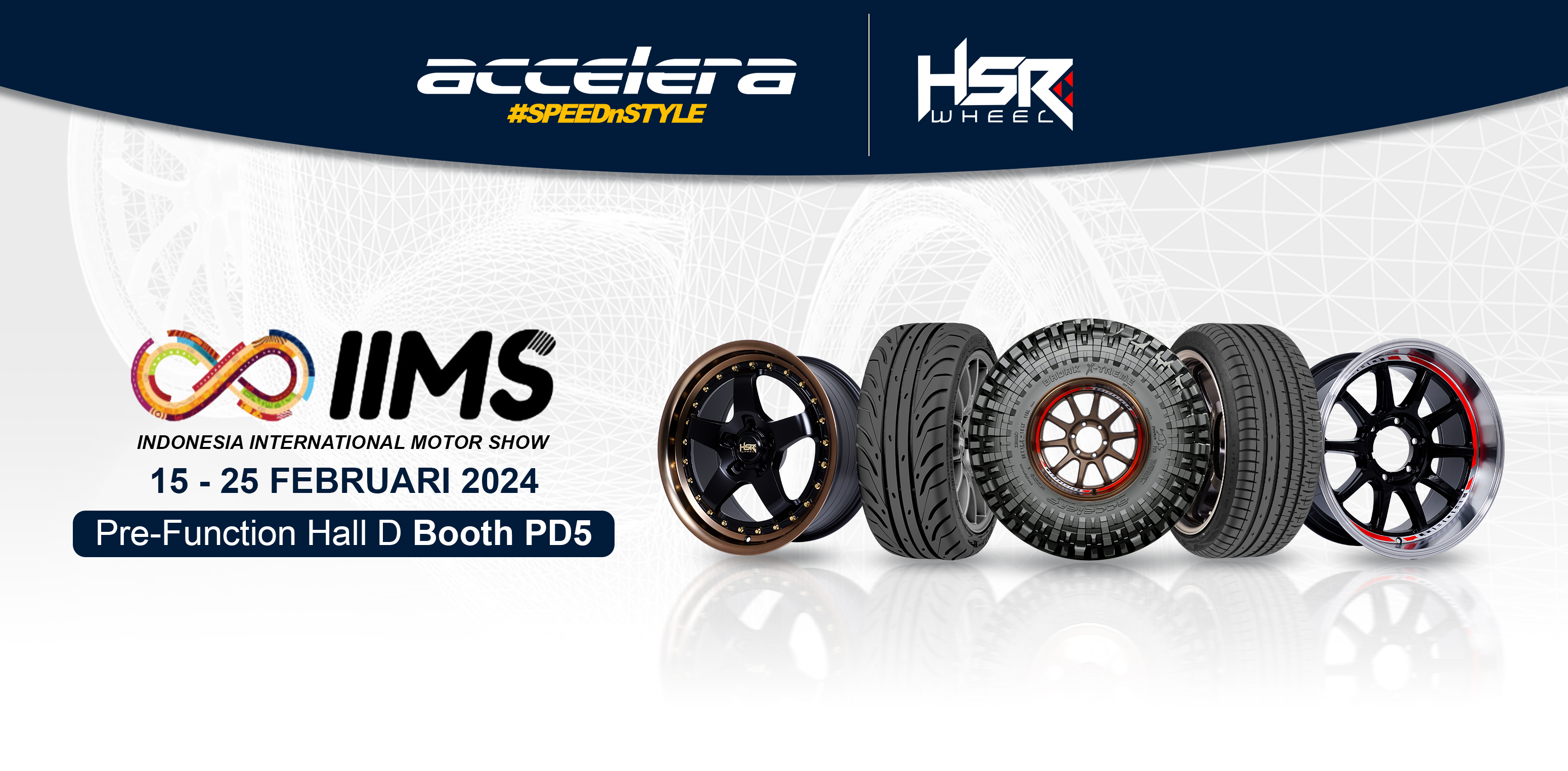Want to Replace Your Car Wheels? Get to Know the Types, Materials, and Construction First
For automotive enthusiasts, wheels are not just metal rims that hold tires in place. More than that, wheels are one of the vital components that can affect both the performance and appearance of a car. No wonder many car owners like to upgrade their wheels to make their vehicles look cooler and more distinctive.
But before rushing to buy new wheels because you're tempted by their design, it's a good idea to familiarize yourself with the different types of wheels and what to consider. After all, wheels aren't just about style, but also about safety and driving comfort.
Wheels Based on Manufacturing Method
From a manufacturing perspective, wheels fall into three main categories: forged, cast, and flow-formed.
- Forged Wheels: Made with super high pressure and extreme temperatures, forged wheels are known to be the most durable. Not only are they lightweight, but they are also much stronger than other wheels. The downside? They are more expensive and less available.
- Cast Wheels: This is the most common method because it is efficient and inexpensive. Casting wheels are made using molds (gravity casting or low pressure casting). They come in a variety of designs and are affordable, but they are not as strong as forged wheels.
- Flow Forming Wheels: These can be considered a middle ground between casting and forging. The process involves spinning and shaping metal at high temperatures, resulting in wheels that are stronger than casting wheels but still more affordable than forged wheels.
Wheels Based on Construction
In addition to the manufacturing method, wheels are also distinguished based on their construction:
- Split Wheels: Consist of 2-3 parts that can be removed and reassembled. This is practical if there is damage, as you can simply replace the damaged part. The downside? They are heavier and less strong than monoblock wheels.
- Monoblock Wheels: Made from a single solid metal block. The result is lighter, stronger, and more rigid. However, if damaged, the entire wheel must be replaced as it cannot be disassembled.
Wheels Based on Material
Lastly, the material of the wheels is also an important factor as it affects weight, performance, and durability.
- Steel Wheels: Affordable and durable, but heavy. They are usually used for everyday cars that need more durability.
- Alloy Wheels: A combination of aluminum and silicon makes these wheels lighter, corrosion-resistant, and fuel-efficient. Suitable for those who want a combination of style and performance.
- Carbon Fiber Wheels: Premium level! Lightweight, super strong, and resistant to extreme weather. However, the price will burn a hole in your wallet.
So, Which One is Right for Your Car?
Choosing wheels isn't just about cool designs that make your car look better. There are performance, safety, and comfort factors that must be considered. So, before buying new wheels, make sure you understand the types, materials, and construction so you don't make the wrong choice.
Indonesia 🇮🇩
Mau Ganti Velg Mobil? Kenali Dulu Jenis, Bahan, dan Konstruksinya
Bagi pecinta otomotif, velg bukan sekadar lingkar besi tempat ban menempel. Lebih dari itu, velg adalah salah satu komponen vital yang bisa memengaruhi performa sekaligus tampilan mobil. Tak heran, banyak pemilik mobil yang gemar upgrade velg demi bikin tampilan tunggangan lebih keren dan berkarakter.
Tapi, sebelum buru-buru beli velg baru karena tergoda desainnya, ada baiknya kenalan dulu dengan jenis-jenis velg dan apa saja yang harus dipertimbangkan. Soalnya, velg bukan cuma soal gaya, tapi juga soal keamanan dan kenyamanan berkendara.
Velg Berdasarkan Cara Pembuatannya
Dari sisi manufaktur, velg punya tiga kategori utama: forged, casting, dan flow forming.
- Velg Forged: Dibuat dengan tekanan super tinggi dan suhu ekstrem, velg forged dikenal paling tangguh. Tak hanya ringan, kekuatannya juga jauh lebih baik dibanding velg lainnya. Kekurangannya? Harga lebih tinggi dan ketersediaannya lebih terbatas.
- Velg Casting: Metode paling umum karena efisien dan murah. Velg casting dibuat dengan cetakan (gravity casting atau low pressure casting). Desainnya beragam dan harganya ramah di kantong, tapi soal kekuatan masih kalah dibanding forged.
- Velg Flow Forming: Bisa dibilang jalan tengah antara casting dan forged. Prosesnya dengan memutar dan membentuk logam di suhu tinggi, hasilnya lebih kuat dari casting, tapi tetap lebih terjangkau dibanding forged.
Velg Berdasarkan Konstruksi
Selain metode pembuatan, velg juga dibedakan berdasarkan konstruksi:
- Velg Split: Terdiri dari 2–3 bagian yang bisa dilepas dan dirakit kembali. Praktis kalau ada kerusakan, cukup ganti bagian yang rusak. Kekurangannya? Lebih berat dan kurang kuat dibanding monoblock.
- Velg Monoblock: Terbuat dari satu blok logam utuh. Hasilnya lebih ringan, kuat, dan rigid. Tapi, kalau rusak, harus diganti penuh karena nggak bisa dibongkar pasang.
Velg Berdasarkan Bahan
Nah, yang terakhir, bahan velg juga jadi faktor penting karena memengaruhi bobot, performa, dan ketahanan.
- Velg Steel: Murah meriah dan tahan banting, tapi berat. Biasanya dipakai untuk mobil harian yang butuh durabilitas lebih.
- Velg Alloy: Paduan aluminium dan silikon bikin velg ini lebih ringan, tahan korosi, dan hemat bahan bakar. Cocok untuk yang pengin kombinasi gaya dan performa.
- Velg Carbon Fiber: Level premium! Ringan, super kuat, dan tahan cuaca ekstrem. Hanya saja, harganya bikin dompet megap-megap.
Jadi, Mana yang Cocok Buat Mobil Kamu?
Memilih velg bukan sekadar soal desain keren yang bikin mobil makin ganteng. Ada faktor performa, keamanan, dan kenyamanan yang wajib dipikirkan. Jadi, sebelum belanja velg baru, pastikan sudah paham jenis, bahan, dan konstruksinya biar nggak salah pilih.






